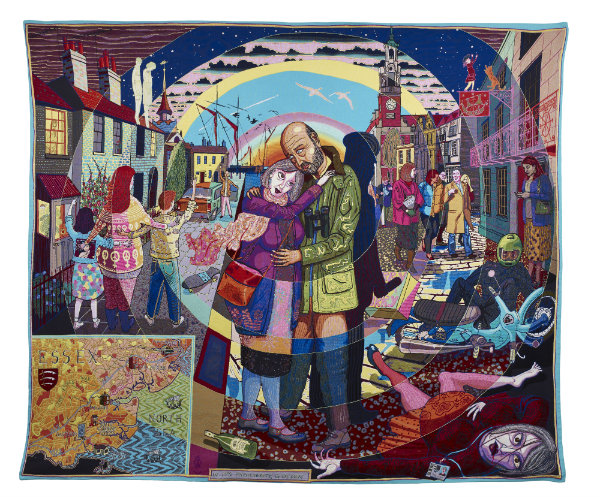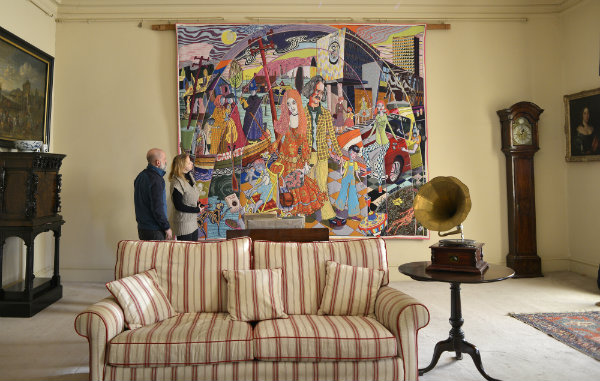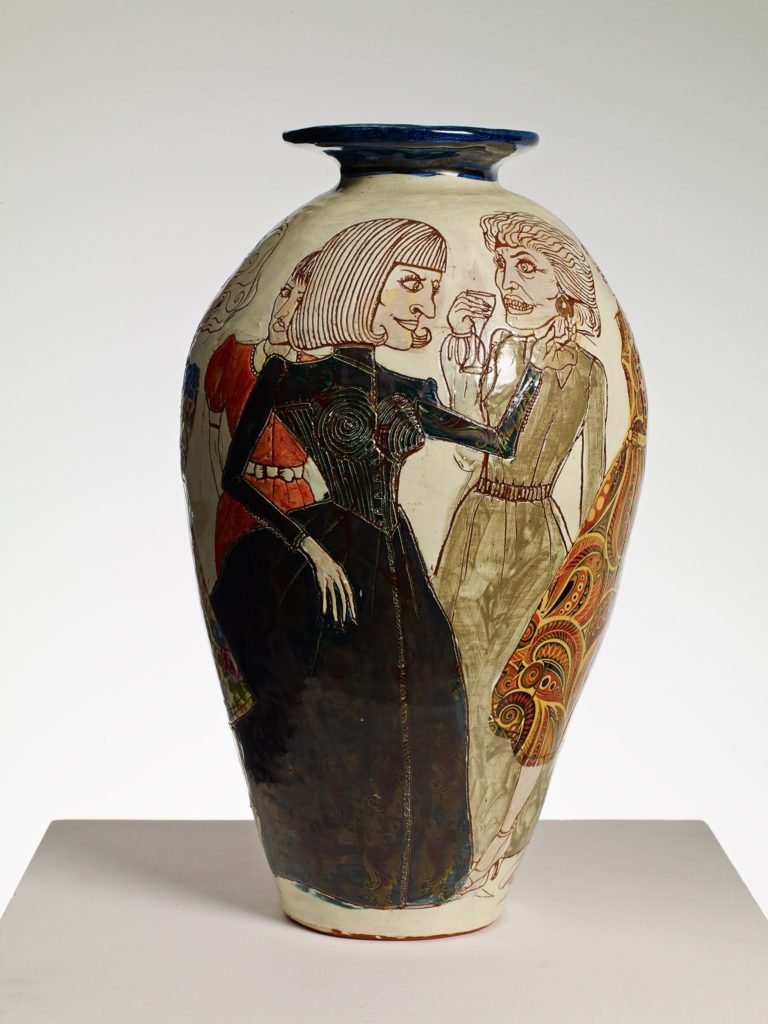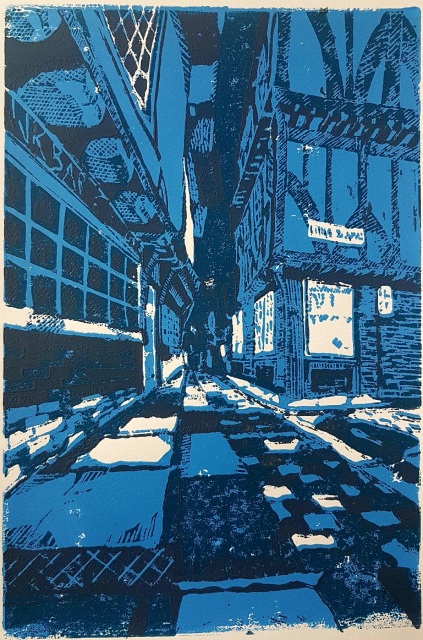
TODAY and tomorrow should have been spent visiting other people’s homes, not staying home, for weekend two of York Open Studios 2020.
On Monday, art attention will turn to episode one of Grayson’s Art Club, a six-part Channel 4 series wherein artist Grayson Perry promises to battle the boredom of Coronavirus lockdown by taking viewers on a journey of art discovery.
From his London workshop, Perry will encourage the British public to create their own art while in isolation, built around six themed shows that will climax with an exhibition of viewers’ art.
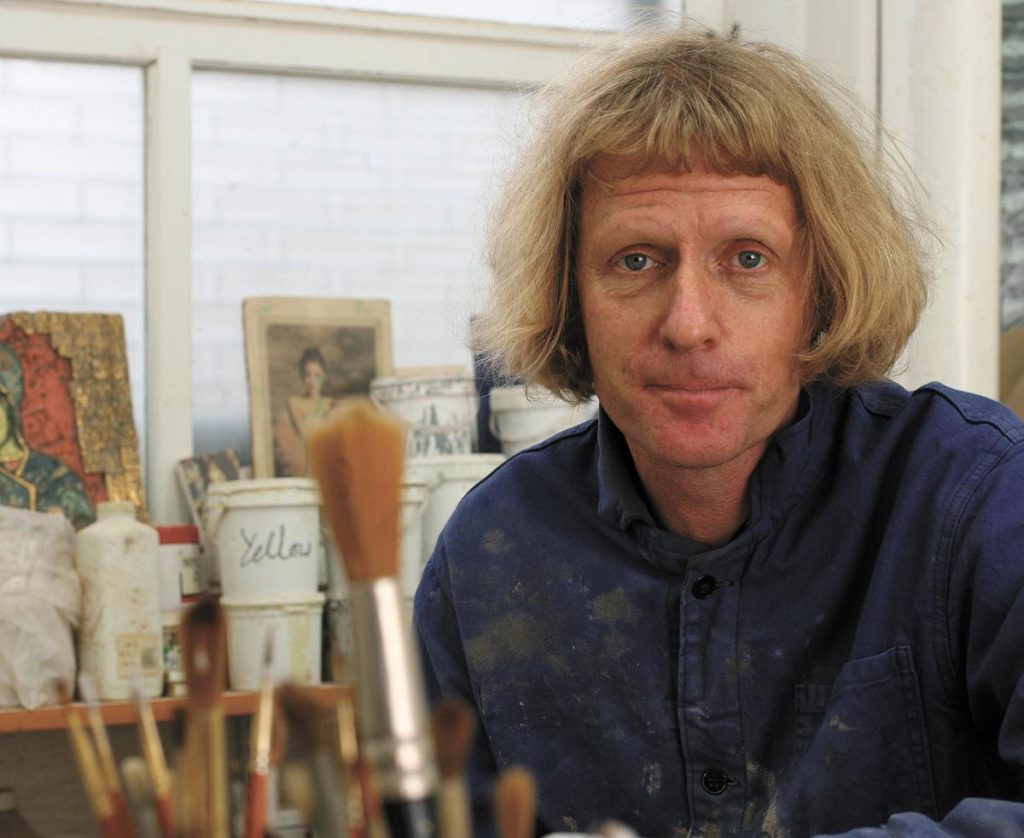
Been there, done that, will continue to do that, might well be the resourceful attitude of the 144 artists and makers at 100 York locations after the Covid-19 pandemic strictures turned York Open Studios into York Shut Studios.
Over the past four weeks, CharlesHutchPress has determinedly championed the creativity of York’s artists and makers, who would have been showcasing their ceramics, collage, digital, illustration, jewellery, mixed media, painting, print, photography, sculpture and textiles skills this month.
Each day, in brochure order, five artists who now miss out on the exposure of Open Studios have been given a pen portrait on these pages, because so much art and craft will have been created for the event and still needs a new home. The last ten are being profiled over this weekend, and again home and studio addresses will not be included at this lockdown time.
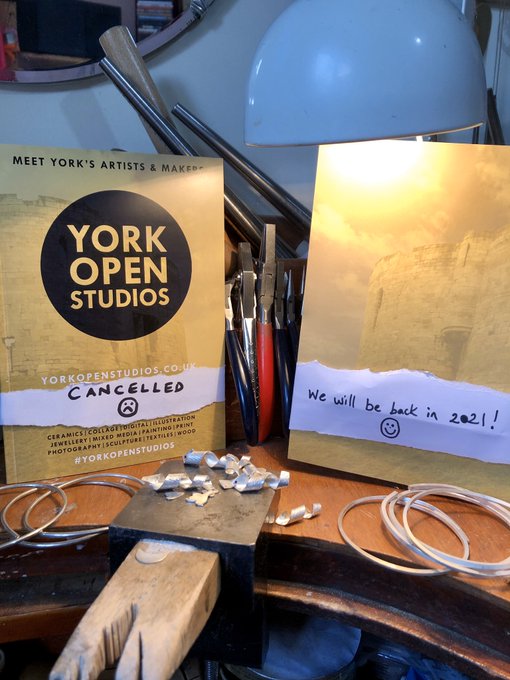
York Open Studios artists have responded to the shutdown by filling their windows for #openwindowsyork2020, while plenty are showcasing their work over the York Open Studios period online via their websites.
This weekend, you can visit yorkopenstudios.co.uk to take your own virtual tour. The YOS website says: “We’re doing a Virtual Open Studios, with artists posting based on a daily theme for the ten days spanning our two weekends.They’ll be showing you their studios and workshops, favourite processes, answering your questions, and of course lots of pictures of their new work.
“Search for #YorkOpenStudios anywhere on social media or follow your favourite artists to see more.”
First, however, here are five more artists and makers for you to discover. The final five will follow tomorrow.
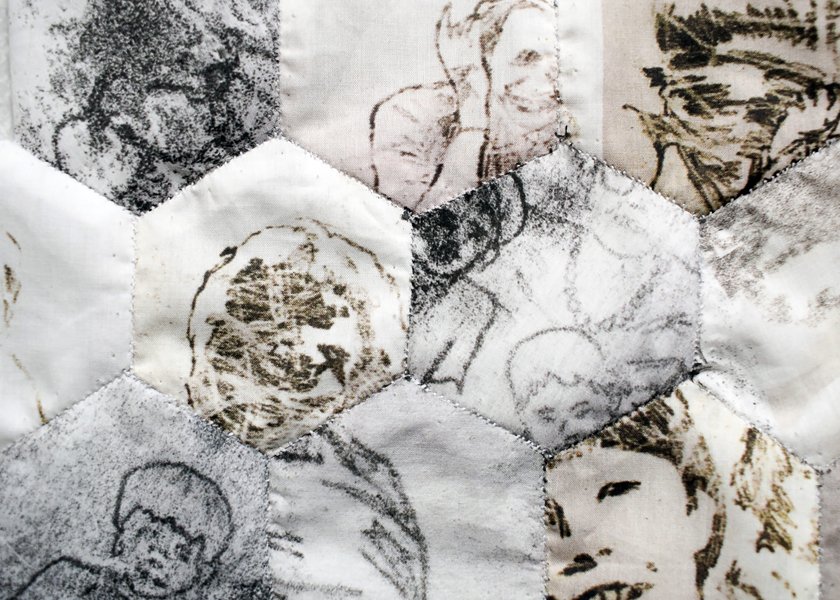
Mim Robson, printmaking
MIM is a multi-disciplinary artist now working primarily in printmaking and textiles, with a background in community arts engagement and land art.
“My current project uses mono-printing techniques, natural dyes, eco-printing and patchwork to explore themes of memory, transition, loss, family, identity and womanhood,” she says.
She also is working on a set of illustrated zines, small books and tiny stories, their subjects varied but “generally an expression of an idea, thought or small observations of people or notable moments”.

Having grown up in the Yorkshire countryside, the natural world inspires her diverse artistic portfolio, whether land art and ephemeral artworks using materials from nature, such as delicate yet vibrant floral mandalas, or her short-lived beach artworks.
Inspired by sand artist Andres Amador, Mim began making large-scale sand art on the Yorkshire coast in 2016. “Using rakes to make patterns in the sand, these usually take at least three hours to complete…and a few miles of walking,” she says. “I use photography to capture these creations at their peak; they last for the rest of the day until the tide washes them away.”

Since completing a national diploma in 3D design craft at York College, she has taken assorted craft courses, learning wood carving, stained glass work and willow weaving; worked and studied in community and youth work and undertaken a degree in Creative Expressive Therapies from the University of Derby.
“This now underpins all of the creative events, Crafty Socials and art, craft and creative expressive workshops I run, as well as my art-making,” says Mim, whose making extends to darkroom and alternative photography techniques, stop-motion videos and henna tattooing at festivals and events. She even finds time for an environmental beach-clean project.
Head to mimrobson.com for more info on this PICA Studios artist.
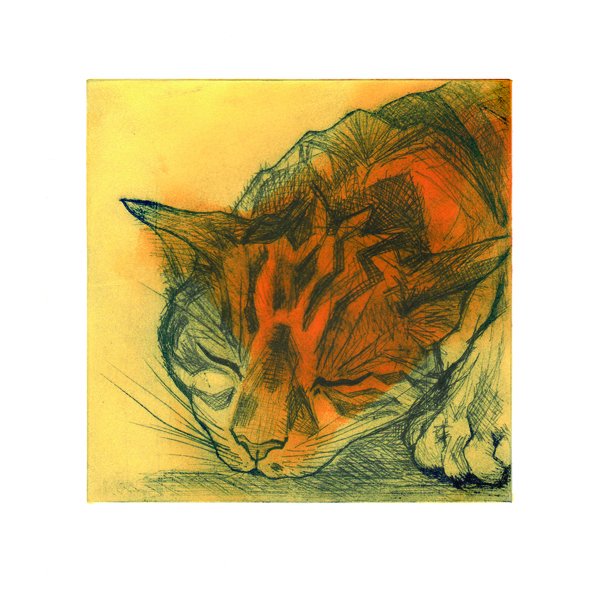
Lesley Shaw, printmaking
ARTIST and printmaker Lesley works primarily in charcoal, dip pen and ink and traditional printmaking techniques, such as linocut, mono and drypoint.
“Life drawings form the basis of all my work,” she says. “I work quickly and instinctively to capture the beauty and simplicity of the form, looking at the shape and line the body takes.”
Whether figurative or animals, her illustrative line drawings are bold, simplistic and striking, inspired by such artists as Egon Schiele, Toulouse Lautrec and Sybil Andrews of the Grosvenor School artists, who captured the spirit of 1930s’ Britain with iconic vibrant linocuts.
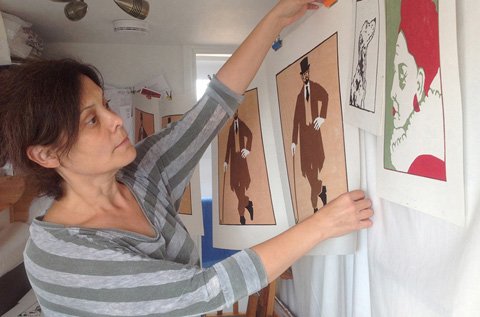
Lesley, who has a degree in illustration, lived and worked in London for more than 20 years before settling in York. She has sold work at the Mall Galleries, in London, and to the BBC and takes part in both York Open Studios and Art& in York, where she is a member of York Printmakers and the York Art Workers Association.
She works from PICA Studios, set within an 18th century printworks, now home to the workshops of around 25 artists and makers. Discover more at lesleyshaw.me.
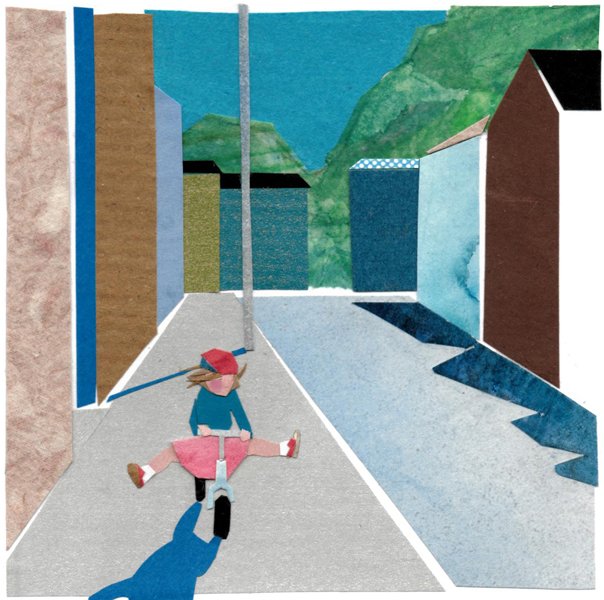
Elena Skoreyko Wagner, collage
CANADIAN illustrator Elena makes bright, intimate, intricate, hand-cut paper collages.
“Using recycled bits of paper imbued with their own histories, I assemble poetic images to illustrate personal stories and emotional experiences,” she says.
Elena completed a BFA in studio art from York University in Toronto, Canada, in 2006, then spent a decade winding her way through odd jobs, a masters in occupational therapy, a couple of overseas moves and motherhood times two en route to illustration.
“I found my way to illustration when some former professors asked me to illustrate a paediatric assessment and suddenly everything made sense,” she says.

“I now work as a freelance and make zines, as well as the colourful hand-cut collages pieced together from collected paper snippets. My work is often autobiographical, depicting women and children to touch gently on social issues, find magic and uncover meaning in the mundane.”
Elena lives in York with her economist husband and two children. “I can be found most days nestled in a nook, manifesting a rainbow tornado of paper snippets, or making equally impressive messes with my two small protégés,” she says.
Now working from PICA Studios, she would have been making her York Open Studios debut. Take a look at elenastreehouse.com.

Ealish Wilson, textiles
EALISH has lived and worked in many places around the world, spending the past 15 years in the USA before making her way to York and now joining the PICA Studios arts hub.
However, Japan was where her work was transformed. “Japan taught me that art exploration and practice is a lifelong journey from which we constantly learn,” she says.
“Experience informs the creative process over time, enhancing and developing an artist’s expression. It’s about seeing creativity in the everyday.”
She brings this philosophy to making her sculptural textiles, using a variety of substrates and techniques, including print, drawing, photography and stitching.
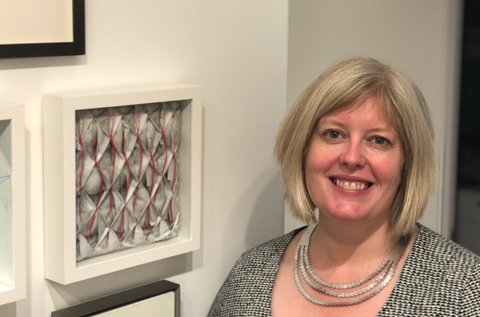
“I repeat this process to create multiple iterations and layers to my designs,” she says. “Much of my process investigates pattern and its transformation through surface manipulation. I use many traditional hand methods of stitching such as pleating and smocking to physically alter my original designs.
“Frequently my work starts in the digital realm: whether photographing an object or one of my own paintings, it serves as inspiration for new work. Many of my images are everyday scenes or objects of purpose that appear mundane but feature a beautiful shape or colour that’s a perfect jumping-off point to create a textile.”
2020 would have been the first year in York Open Studios for a textile designer who sees the craft of making as “my form or meditation”. Visit ealishwilson.com to see her work.
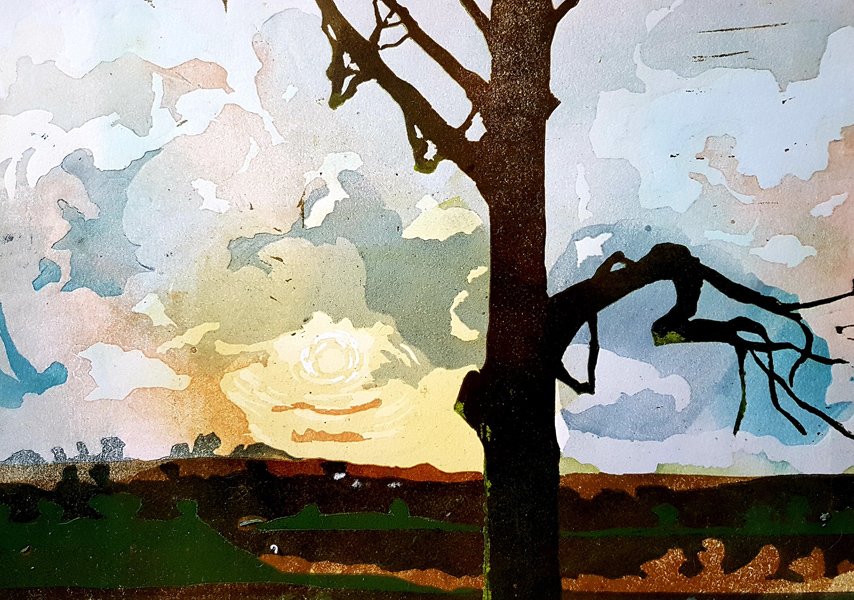
Greg Winrow, printmaking
GREG splits his time 50/50 producing silk screen and linocut prints covering a variety of topics in his York studio, where he uses a Hawthorne press for his lino work.
Earlier, he studied art and design in York and photography and design in Harrogate before acquiring his interest in printing techniques.

Now a keen member of the York Printmakers, taking part in their annual fair, he has exhibited too at the York River Art Market and York galleries. 2020 was to have been his second year in York Open Studios.
And finally, tomorrow: Marcus Callum; Robert Burton; Jo Walton; Emma Walsh and Northern Electric (Katie Greenbrown).


